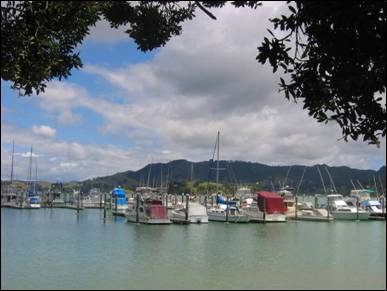Harbour Water Quality Monitoring Programme
Coastal water quality is influenced by inputs from rivers and streams, urban and rural run off and direct discharges into the coast. As human land use and urban development intensifies, coastal water quality will come under increasing pressure.
The threat to coastal water quality is likely to be worse in semi-enclosed coastal water bodies, such as estuaries and harbours, where there is less exchange of water with the open coast.

Photo: Whangaroa Harbour – concentrations of bacteria were within MfE guidelines
Harbour water and sediment quality is monitored by the Council in the Whangarei, Whangaroa and Bay of Islands harbours. In 2008-09, the Council undertook routine water quality testing at 16 sites in the Whangarei Harbour, 16 sites in the Bay of Islands harbour and nine sites in Whangaroa Harbour.
Monitoring sites in these harbours have been selected to capture the main freshwater inputs into the systems, and to assess water quality across the harbour.
In the Whangarei Harbour and the Bay of Islands, both physical and chemical properties of the water are measured, including temperature, salinity, turbidity, dissolved oxygen, nutrients and bacteria. In the Whangaroa Harbour, monitoring is focused on sampling levels of bacteria as this programme is designed to detect any health risk associated with shellfish collection.
